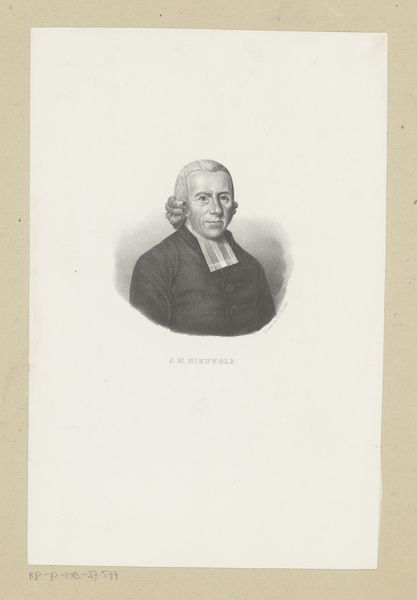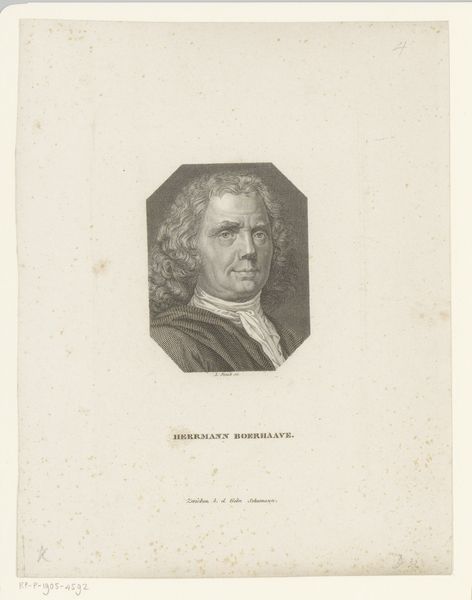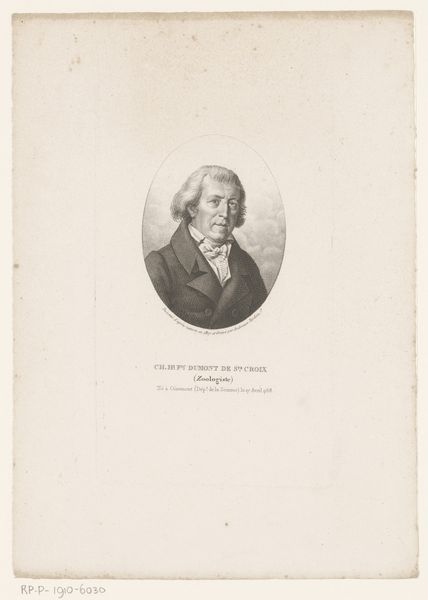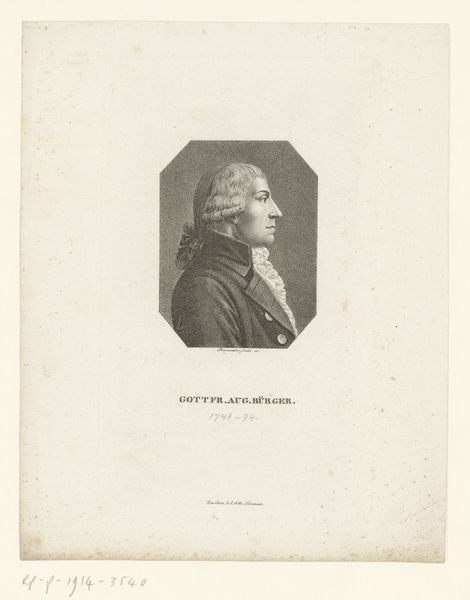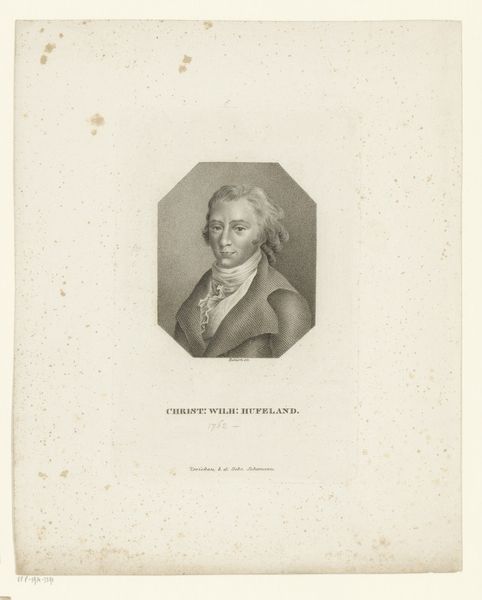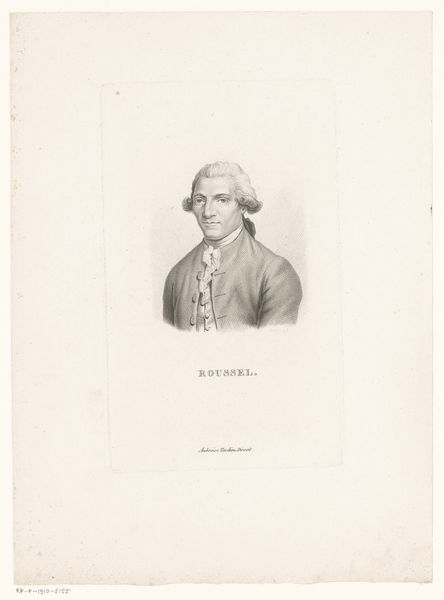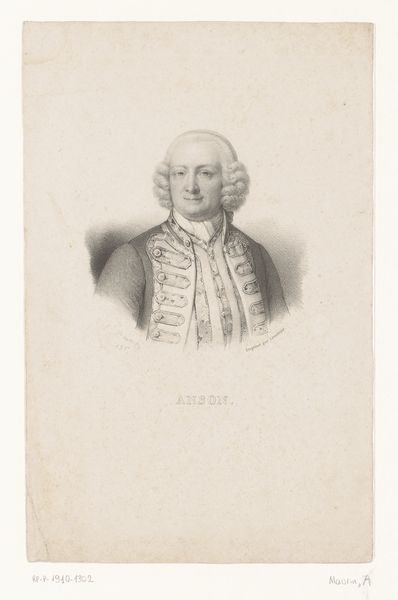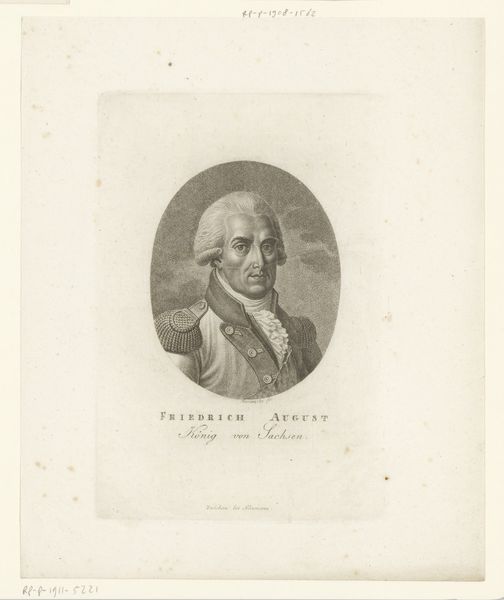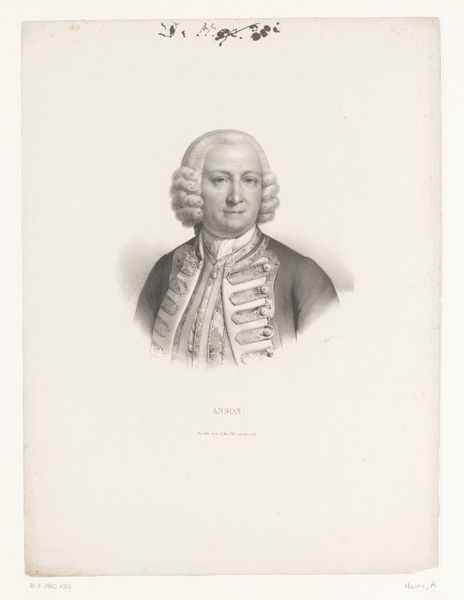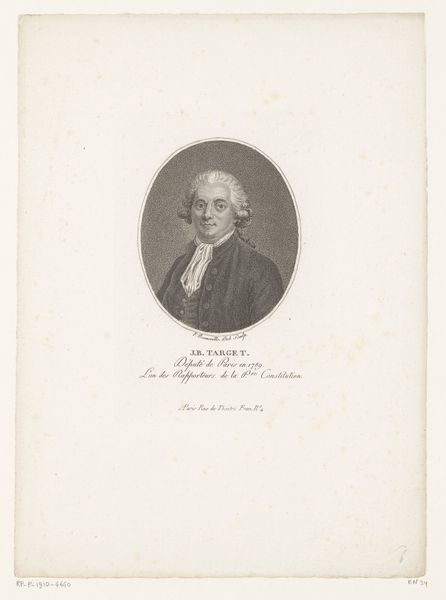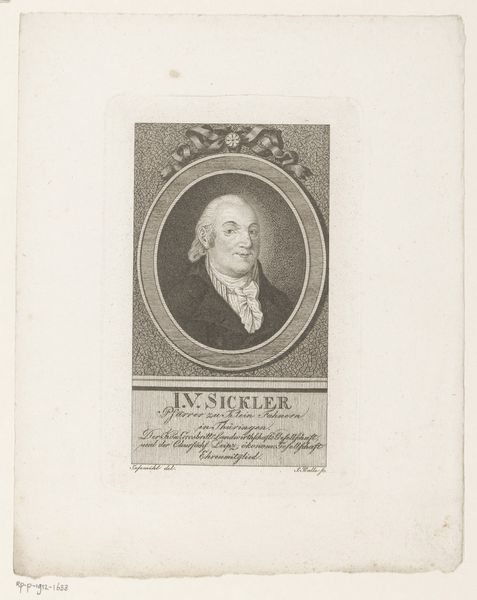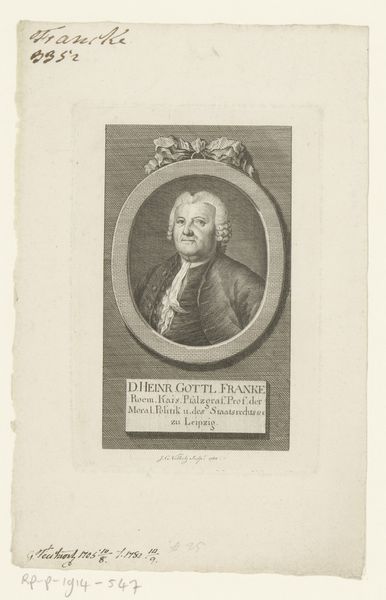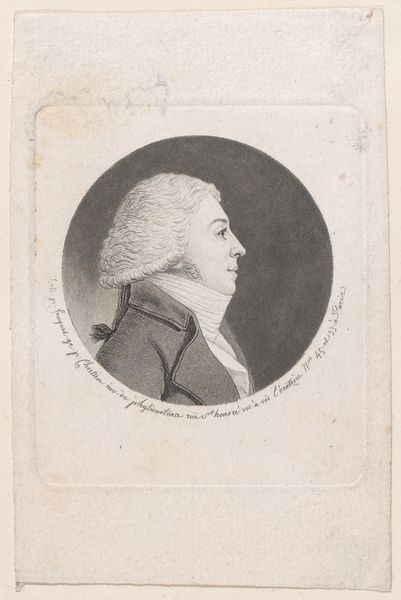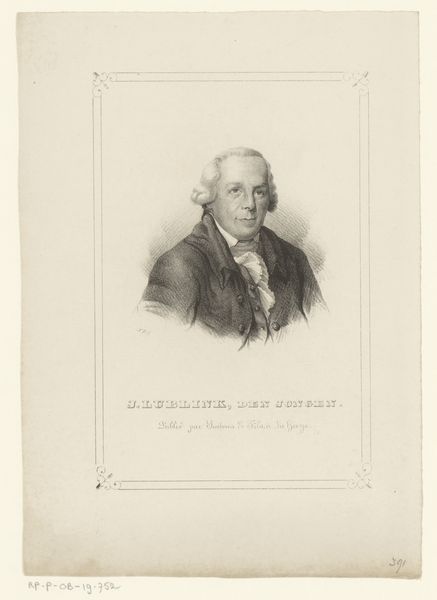
engraving
#
portrait
#
neoclacissism
#
old engraving style
#
engraving
Dimensions: height 175 mm, width 115 mm
Copyright: Rijks Museum: Open Domain
Curator: Looking at this piece, my first thought is...serenity. It's a quiet, contemplative portrait, rendered with incredible precision. Editor: Indeed. Here we have a 19th-century engraving entitled "John Brown," believed to be created by J. Rémon. It's a neoclassical portrait. It's so interesting how historical portraiture functions. Here, in depicting John Brown, what historical context and narrative is amplified or muted? Curator: Muted definitely seems the word. It almost has the feeling of those old pictures, like something faded in a locket—delicate, reserved. The use of engraving is so detailed and makes the portrait seem so alive somehow. It almost transcends its age. Do you get that? Editor: Absolutely. Think about what engravings communicate. They weren't merely decorative or mimetic representations, they are products of power and politics, intended to represent specific class interests at particular junctures in time. Consider the composition itself: placing Brown inside of the frame works to connote specific qualities of respectability, education, and class that reflect political economic priorities and aesthetic considerations that were circulating at the time this work was made. Curator: It does bring up an important tension about capturing people for historical preservation. It is such a subjective interpretation, which could become manipulated. Editor: Right. Consider the role art can play in shaping collective memory and cultural narratives. It allows one to question whose stories get told and who has control of those telling methods. How might our understanding of John Brown, or any historical figure for that matter, shift when their story is visualized differently? Curator: Thinking about it now makes me feel like the portrait holds more secrets. It invites curiosity but keeps everything tightly buttoned, doesn't it? Editor: Precisely, this single engraving—an intentional historical document—creates an archive and represents what will later be perceived as a larger idea or historical account. That history then begins to calcify. Curator: Wow. It does really add a whole other layer of complexity to what I initially considered to be a really elegant, simple, pretty piece of art. I think it brings to mind those issues of how portraiture and political intent go hand-in-hand. Editor: Agreed. So much is present beyond its surface serenity.
Comments
No comments
Be the first to comment and join the conversation on the ultimate creative platform.
